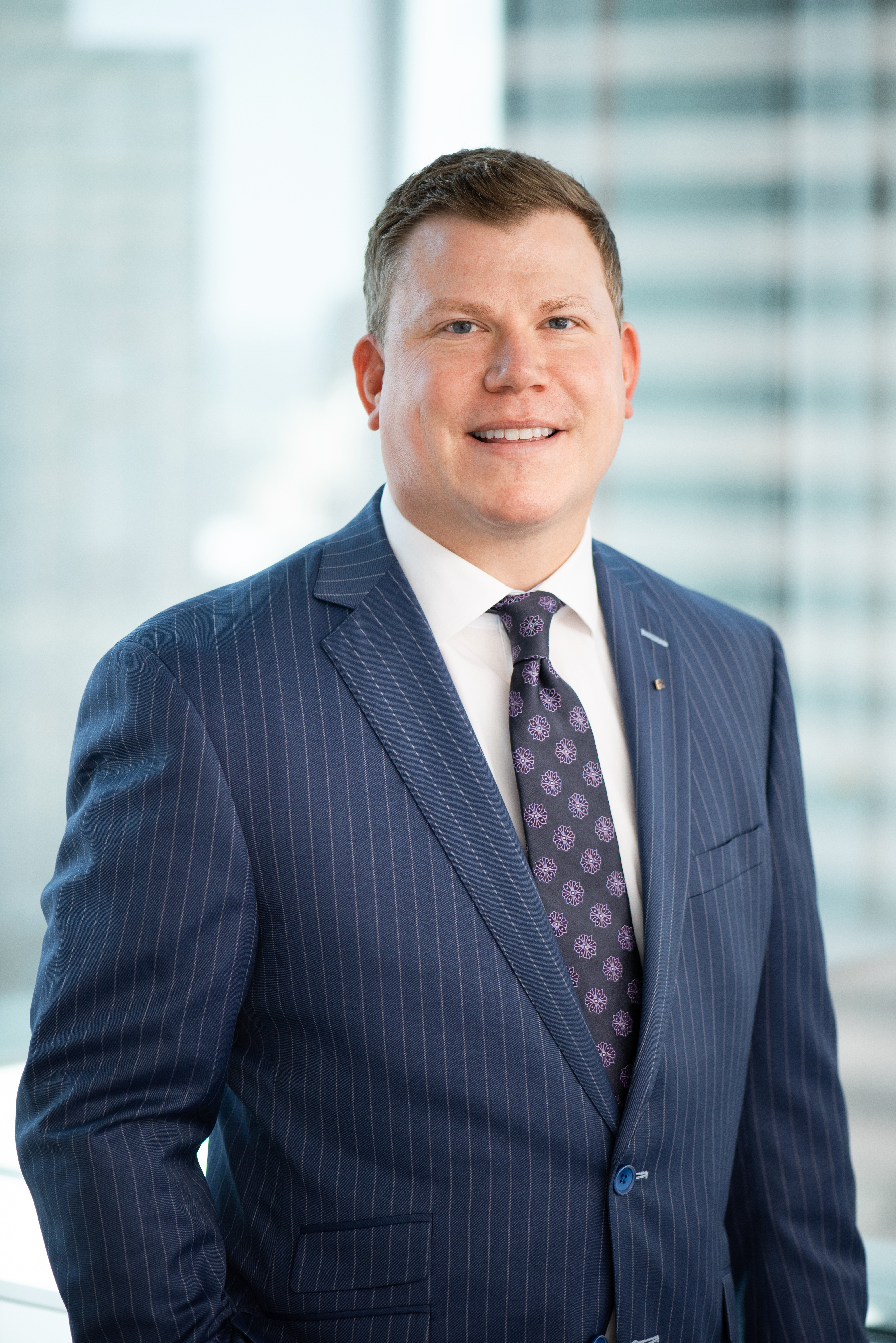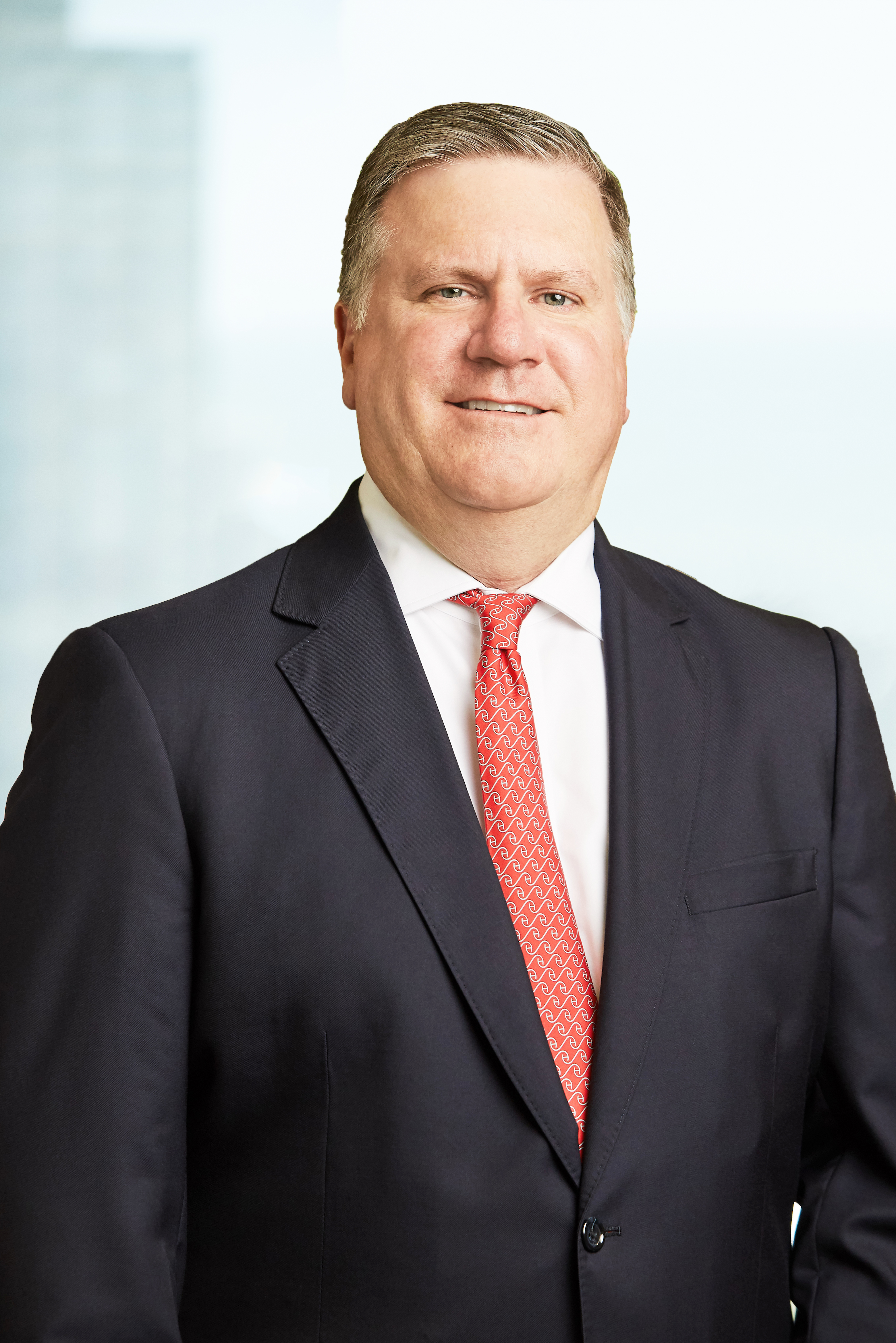D CEO has turned to some of Dallas’ most respected banking leaders to get their assessment regarding the current state of how Dallas businesses handle their banking and finances as well as the various trends they have been observing, and often establishing. These experts offer a glimpse into the state of banking from the perspectives of those sought after for delivering financial business advice and giving beneficial updates about trends and changes in banking.
Based on what you’ve seen with your clients, how does the current state of our economy affect business banking strategies?
Michael Burr: Clients are consistently balancing opportunities against related market risks. Regardless of the stage of the economy, financing sources must understand and align their institutional strategies with that of their client base. For clients, philosophical alignment is critical when having to select their banking/financing partners, especially as business cycles begin to slow. The fact that the overall economy is in the later phase of our country’s longest expansion cycle makes the relationship characteristic a necessary strategic alignment and prerequisite for banks and clients.

Greg Massey: The Texas economy continues to be very strong as we continue to see strong loan demand from both commercial and consumer customers (15 percent increase year over year). Our culture and strategy continue to attract the best bankers in our markets and, together, they provide phenomenal customer experiences and serve our communities through an integrated approach. With the continued job growth in North and Central Texas, we continue to be very optimistic of the next several quarters even as the Federal Reserve has started increasing rates.
Kevin Hanigan: Our state and local economies continue to perform very well. Clients are enthusiastic about their business prospects and the impact of the tax reform. All of this bodes well for the Dallas banking sector.
Zach Fee: Our economy is performing well right now. We just saw the Federal Reserve raise interest rates back in June, which indicates our economy is recovering nicely. We continue to see strong growth in various sectors like commercial real estate, manufacturing and transportation/logistics, and corporate trust throughout North Texas.
Have the selection criteria changed for businesses looking to build new banking relationships? If so, what are businesses looking for now compared to 10 years ago?
Greg Massey: Our strategy to develop multi-generational relationships seems to serve us very well as we provide steadfast support to our clients through both good and bad times, most recently during the downturn of 2008-2009. When recalling times such as those, many businesses remember that a real relationship can be invaluable during challenging times and that there is more value in doing business with an organization with local decision makers who know and care for their customers and communities.
Michael Burr: No, and yes. The fundamental criteria of an attractive client remain unchanged as banks are looking for companies with growing revenue and profitability, expanding banking needs, philosophical risk alignment, etc. However, as opposed to a decade ago, banks are critically seeking clients with more defensible and sustainable business models. The impact and speed of technology has challenged businesses to constantly evolve their business models. Accordingly, banks must check new opportunities and their future viability in a more granular way. Ten years ago, we put together a financial model that was less dynamic than those we prepare and rate today. Today’s financial analysis involves digging deeper into the value proposition of a new relationship and determining whether we believe company management is able to meet all the challenges of the industry and clients they serve.
Zach Fee: The financial industry continues to evolve. It looks very different when compared to 10 years ago. Today, the major deciding factor in choosing a bank is evaluating relationships. The question to ask is, “Who has the desire and commitment to your industry, your company, and you not only now, but for the long term?” This is the company that will create the right financial package for current needs and will also be thoughtful, proactive, and open-minded as your company evolves. Customers need to have confidence that their bank is financially healthy and can work with them through all the seasons and cyclicality of their businesses.
Kevin Hanigan: Relationships, access to decision makers, and the bank’s ability to support their future needs are still key considerations when evaluating a new financial partnership, but today, more than ever, businesses are looking for comprehensive treasury services and digital products.
How does a bank in 2018 differentiate itself from the competition?
Greg Massey: Being a purpose-driven organization, it is important to us that we stay true to the reason we believe we have all been brought together and that is to “inspire and empower others to Spend Life Wisely.” This isn’t a tagline for us. This is our purpose and what we individually and collectively strive to do each and every day. We are transforming lives, families, and communities.
Kevin Hanigan: For us, being based in North Texas means we make decisions locally, and our clients interact with
our decision makers. Because we are a nearly $10 billion bank, we can give our clients greater access to the capital they need and offer innovative products.
Michael Burr: East West Bank provides a unique competitive perspective and product focus for our clients. Our ability to offer a broad array of international products and solutions is just a component of our model. The opportunity to help our clients navigate and conduct business domestically and internationally is a unique characteristic that many middle market-focused banks can’t provide. In addition, industry specialization is clear approach for banks to competitively differentiate. Our bank has done this in many ways, but no better example than the development of our Dallas-based oil and gas industry team. We hired a top-tier banker to the lead the effort in Christina Kitchens. We provided her the resources to build a first-rate team, and the result has been a highly successful, differentiated initiative. While many institutions can offer capital, few banks can help companies find diverse solutions for understanding of the risks and opportunities in dealing with overseas trading partners or banking energy clients in the highly competitive Permian Basin.

Zach Fee: To stand out today, a bank needs excellent people to put in front of clients. They need world-class talent that can bring relationship-based customer service to each industry and client it supports. At UMB Bank, our relationships and access to senior leadership set us apart. Every associate can reach a senior executive in a timely manner, which makes our response time shorter and allows our associates to be proactive with clients. We offer the best of both worlds, as we have the excellent client service one would expect from a smaller financial institution, as well as the products and services offered by a larger institution.
How are you positioning your clients for the potential of a slower growth economy?
Greg Massey: Businesses are positioning themselves as a result of thoughtful conversations with their bankers about future plans and the risks and opportunities that are present when different economic factors occur. Discussing the value of stress testing business plans and considering leasing equipment that can be returned in a slowdown are valuable conversations with clients. Locking in interest rates is a tool banks provide as well as being able to quickly increase lines of credit or shift debt to an appropriate amortization structure.
Michael Burr: The most frequently asked question in the financing world is, “How you protect the bank and its stakeholders from the impact of a down economic cycle?” The simple answer is that you can’t fully insulate yourself from the next down cycle. However, top-tier banks and bankers make sure their client selection process is disciplined. This approach is critical as we approach a potentially slowing business cycle. Clients who have experienced and thrived in difficult economic cycles are the most desired and important to sustaining and prospering during a slower economy. Accordingly, the most important approach we can support is a diligent client selection culture which, if we get it right, will make sure our clients are best positioned within a strong and stable financial institution.
What are some of your predictions for how business banking may change or evolve during the next five to 10 years?
Greg Massey: Consolidation of traditional banks through acquisitions will increase dramatically with recent regulatory changes. More nontraditional lenders that do not have similar regulations as deposit-insured banks will enter the marketplace to serve the debt aspect of business needs. Specialty financial technology companies will provide cash management and payment solutions. Additionally, larger technology companies will also develop products that replicate what fintech companies are doing and use their scale or existing business networks to gain market share.
Michael Burr: I’ve been a banker for 32 years, and I’m not sure that any prediction I’ve made has come to pass. It is equally difficult to look further than a couple of years into the future for one simple reason—rapid technology changes. The financial services industry has been improved by technological advances and challenged by the same technology. I’m not sure anyone would have predicted the impact of cryptocurrency or currency movement provided by PayPal or Zelle. However, I do believe they give us an insight of what to expect. Businesses expect their financial institutions to expand their products to provide faster response and more flexibility. Like other industries, the future will continue to push banking to offer what the individual client wants rather than a one-size-fits-all solution.
Kevin Hanigan: The use of technology will become increasingly important, and digital and mobile services will become table stakes for all of us. Additionally, artificial intelligence will become commonplace.
In today’s economic environment, which industries and markets show opportunity?
Zach Fee: The North Texas area continues to grow at a rapid pace, which is exciting for everyone already in the market. From our perspective, we see opportunity in several sectors, including commercial real estate, manufacturing, distribution, energy, and transportation/logistics. Michael Burr: The Amazon effect of our economy shows us a glimpse into those industries that should be on everyone’s radar for future opportunity. If an industry has lagged because of its inefficient use of technology, it is likely ripe for disruption. Healthcare is the industry I believe will be in the center of the bullseye. The broad healthcare industry accounts for more than 17 percent of the nation’s GDP and is growing at an alarming rate. This is a huge concern for the entire economy, yet a significant opportunity. I believe smart business people, especially those with a technology angle, will find new and creative ways to disrupt how we think about this industry. When an industry has such a large slice of our spending, I look for companies that create solutions and become a catalyst for future opportunity.
“As opposed to a decade ago, banks are critically seeking clients with more defensible and sustainable business models.
Michael Burr, East West Bank
Kevin Hanigan: Probably the biggest change we have seen in the past three and a half years is the end of the significant downturn in energy. At these higher oil prices, capital expenses in Texas will increase materially.
Do businesses have more or fewer options today than they did 10 years ago? Why?
Michael Burr: Today’s businesses have many more banking options. The ability for a company to finance its operation is no longer governed by its geography. In fact, alternatives are not only expanding in the number of potential banking partners, but also with the type of institutional offering. As technology has disrupted the brick-and-mortar banking model, it has more developed products and services that are specifically directed to fit the needs of today’s businesses. An example of this specialization is in the technology industry, as the spectrum of industry participants—start up to mature—require unique financial solutions that can understand and underwrite the company specific risks. The day and time of a one-size-fits-all model continues to fade.
Zach Fee: Technology has been a game changer. We are currently operating in a very competitive banking environment, which is giving businesses more options than ever before. More banks are playing on a larger scale because of access to technology, which is advantageous for the customer. Going forward, banks must be focused on building solid relationships, while offering competitive products and user-friendly technology.
How is the current tax landscape affecting your business clients in terms of their banking strategies?
Kevin Hanigan: Until tax reform was passed, many businesses were hesitant to make long-term capital commitments to projects. Tax reform has already stimulated increased capital spending and should continue to do so.
Zach Fee: With these changes, we saw several clients expand their businesses by either buying a new building or investing in new equipment. In addition, clients are exploring interest rate options like locking in rates or an interest rate swap. This growth has brought more confidence to the business community, and we are excited to support our clients through the rest of the year as they work to achieve their financial goals.
What do most Dallas-Fort Worth businesses need to succeed, and what are some common obstacles getting in their way?

Michael Burr: The Dallas-Fort Worth marketplace is one of the most appealing regions in the country. Accordingly, the opportunities for small to large businesses are unlimited. The appeal of Dallas-Fort Worth and its impressive population growth provides momentum for new and existing companies. However, with this type of growth comes some interesting challenges and characteristics that differentiate great companies. One of these challenges is people, and specifically, financial talent. As companies grow, the ability to anticipate and manage their financial needs is critical and often a primary limiting factor. The local talent market is a competitive as I can remember. The businesses that attract and hold this talent will outdistanced their competition.
Greg Massey: Success is often correlated with organizations that provide a desirable product coupled with a thoughtful strategy to compete in the marketplace executed by a leadership team that is responsive. We all have been doing less with more this last decade and intentional investing in human capital is a current obstacle. Businesses need talent that is growing and ready to assume responsibilities as business complexity increases or succession due to retirement occurs. Providing training and hiring talent that can grow into roles is needed for businesses to succeed.
What financial services products and programs have emerged as popular among your business clients in the last few years?
Greg Massey: We continue to see two primary trends in customer experience with commercial customers. The first of these being that a commercial customer prefers a real banker that can add value to their business and be a true partner in transforming their financial well-being. The second has been the implementation of new technology within our treasury management group that enhances day-to-day financial transactions, making them fast and easy.
Zach Fee: Technology has changed our industry, with clients asking for more mobile options and immediate access to their accounts. Our commercial clients are interested in learning more about our vendor payable card programs, which can extend cash flow and earn significant rebates. Our private wealth management offerings have also seen
a surge in popularity among business owners who want a financial institution that can handle both their business and personal needs through all life cycles, including succession planning.
Kevin Hanigan: Our clients want products and programs that can increase efficiency and streamline processing. A robust treasury management platform and digital product offerings are must-haves.
What does your bank look for in an emerging business to invest in?
Greg Massey: Possessing the appropriate amount of equity is always critical, but the success or failure of an emerging business is often the result of the quality of the leadership team and their ability to make timely and prudent decisions. We look at the soundness and thoughtfulness of the business plan with respect to the track record and potential of the leaders to evaluate their capacity to effectively manage their enterprise.
Kevin Hanigan: We look for defensible business models that can adapt to change and proven management teams that have executed well throughout business cycles.
What are some of your clients’ biggest financial concerns currently, and how are you addressing them?

Greg Massey: On the personal side, clients struggle to prepare for that next life event. In the event of illness, job loss, or family emergency to saving for that house, trip of a lifetime, or retirement, less reliance on credit and more savings is needed. First United provides resources on financial education and the importance of saving. Businesses are concerned with the amount and flexibility of the credit they can access to grow. Our bankers are focused on understanding clients’ biggest concerns and bringing the appropriate expertise and products to serve the client.
Zach Fee: Rising interest rates is a hot topic with our clients right now. We are having ongoing conversations about strategies that can help them meet their financial goals during this time. For many, this includes discussions regarding different interest rate options, such as locking in rates, picking a floating rate, or doing an interest rate swap. For other clients, cash flow is a growing concern. We work with those clients to create the right working capital plan that will help support them through their different business cycles and growth, including senior debt, senior stretch, and mezzanine financing for organic growth and acquisitions.
How serious of a threat to businesses is cyber-crime? Are we seeing more or less of this activity?
Greg Massey: It is terribly serious, and we are seeing more of this activity. People and businesses need to establish proper controls so that information is not compromised or money stolen. Malware attacks remain a problem with hackers trying to obtain business credentials to direct banking activities. There are bank products that can help with internal and external fraud. Customers need to take this threat very seriously. Don’t let the efficiency of technology remove the personal accountability that is paramount to safeguarding assets.
Kevin Hanigan: Most surveys I read indicate cyber-crime is the No. 1 threat identified by the majority of CEOs. Spending on cyber security continues to increase, but so does the sophistication of the cyber-criminal.
What are the pros and cons of charitable giving for businesses today?
Zach Fee: From our standpoint, it is important for business leaders to sup- port causes they are passionate about as well as causes that resonate with their employees. At UMB, we support several great areas in the community like the arts, financial literacy, underprivileged children and mothers, and self-sufficiency. We believe it is our duty and privilege to give back to each community we serve, and we encourage our clients to do the same for their communities.
Kevin Hanigan: We believe it is our responsibility to give back to our community. Investing our time, money, and talent into local services and programs helps improve the lives of others which strengthens our economy.
Any trends you are seeing in what Dallas- Fort Worth-based business borrowers are doing with the financing you provide?
Zach Fee: Our commercial real estate developer clients are working on new buildings in all asset classes which is exciting to watch. We have a big supply and demand challenge in the market right now, and this growth will help propel our city forward. Additionally, we’re seeing greater organic growth, as well as acquisitions, than any other market we’re in. It’s a great time to be a Texan!
Greg Massey: Acquisition financing and commercial real estate development investment remain high. Some borrowers are being more focused on rate and fixing debt or shopping to find a lower rate on variable credit lines. Others are strategically reducing debt in anticipation of a market recession and significantly higher rates.






